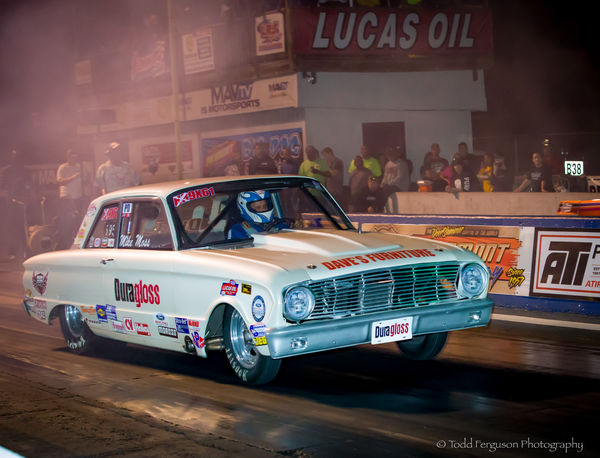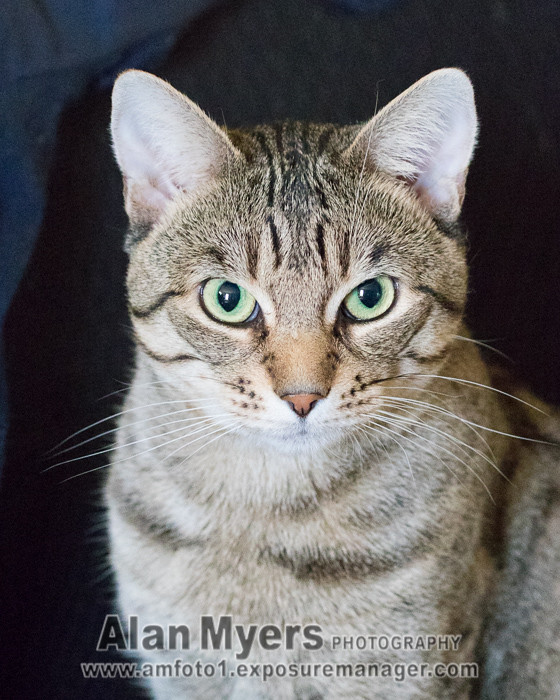Posts for: Notorious T.O.D.
Oct 5, 2017 00:03:16 #
If money were really not an issue then one would just buy both, some great glass and perhaps a Sony or two also...
Best,
Todd Ferguson
Best,
Todd Ferguson
Oct 4, 2017 23:43:58 #
Haydon wrote:
I read somewhere that Sony took number 2 away from Nikon in FF a short while back. That might change with the D850 but I really believe it's all about marketing. Canon for almost a decade has produced a sensor that doesn't fair well at low ISO to the competitors but it hasn't changed their marketshare. If anything, it's strengthened.
Perhaps because ultimately most people are outputting 8 bit JPEG images and the casual viewer can't really see any difference at that point.
Best,
Todd Ferguson
Oct 4, 2017 23:32:35 #
But sensor is only one factor...
Sort of reminds me that I used to tell my manager that I wanted to be evaluated based on height and weight...
Best,
Todd Ferguson
Sort of reminds me that I used to tell my manager that I wanted to be evaluated based on height and weight...
Best,
Todd Ferguson
Robert Bailey wrote:
Dxomark ranks the Canon 5D Mark IV as number 16 on... (show quote)
Oct 3, 2017 10:56:33 #
Ah Yes, The Exposure Triangle... The ISO, Shutter, Aperture one or the Light, Shutter, Aperture one? As I think about ISO as Gain over Time the more I like the latter. But because you can easily change ISO on Digital Cameras I think the former has become the standard that people refer to usually. Regardless of which you like or believe in we do have a lot of flexibility with Digital that film didn't offer.
Best,
Todd Ferguson
Best,
Todd Ferguson
Oct 3, 2017 08:35:15 #
Spend a dollar and get a depth of field calculator application.
I generally shoot Tv which for Canon is Shutter Priority.
To me when I am usually shooting relatively fast moving things if you don't stop the motion the rest doesn't much matter. That said I know a lot of people who shoot Aperture Priority. Each has its place and use. Getting a reasonably accurate white balance and exposure are also important especially if you are shooting JPEG and not RAW.
Best,
Todd Ferguson
I generally shoot Tv which for Canon is Shutter Priority.
To me when I am usually shooting relatively fast moving things if you don't stop the motion the rest doesn't much matter. That said I know a lot of people who shoot Aperture Priority. Each has its place and use. Getting a reasonably accurate white balance and exposure are also important especially if you are shooting JPEG and not RAW.
Best,
Todd Ferguson
Oct 2, 2017 22:36:42 #
Love the 1D cameras with built in grips.
Add on grips for other cameras not as much...
Best,
Todd Ferguson
Add on grips for other cameras not as much...
Best,
Todd Ferguson
Oct 2, 2017 20:53:16 #
burkphoto wrote:
What else is there to do in Harrisburg, NC, anyway? 
It’s like race town, USA... an amazing amount of motor sports business happens there.

It’s like race town, USA... an amazing amount of motor sports business happens there.
Burk,
Yes, we live about 5 miles from Charlotte Motor Speedway and 6 miles from zMax Dragway. This photo is from Piedmont Dragway about a 100 miles up I85 from us. There are a few Champion drag racers in Harrisburg, NC including Charles Carpenter, Steve Furr and my son, Dan. There are quite a few drag racers in the area and we also have Wood Brothers of NASCAR fame in Harrisburg too. But Mooresville is still Race City. And Mooresville Dragway is running again...
Best,
Todd Ferguson
Oct 2, 2017 18:02:23 #
TriX wrote:
Nice shot. Looks like a Ford Falcon - what’s under the hood?
Don't know what it is running...nothing huge I don't think...
He is having fun and its not costing him a ton it appears...
Best,
Todd Ferguson
Oct 2, 2017 16:30:34 #
An example image shot at ISO 6400, f/5.0, 1/250, 70mm, cropped and with some flash to add some light.
September 14, 2017 at 8:30pm...
Noise reduction done in Lightroom...
Being able to add light with a flash or two is a huge advantage.
With the flash sync of 1/250th stopping the motion can be an issue.
But High Speed Sync might be a viable option if overheating the flash can be avoided.
If the flash is providing most of the light the flash duration is so brief it can stop the motion.
But that takes a lot of light output...
Best,
Todd Ferguson
September 14, 2017 at 8:30pm...
Noise reduction done in Lightroom...
Being able to add light with a flash or two is a huge advantage.
With the flash sync of 1/250th stopping the motion can be an issue.
But High Speed Sync might be a viable option if overheating the flash can be avoided.
If the flash is providing most of the light the flash duration is so brief it can stop the motion.
But that takes a lot of light output...
Best,
Todd Ferguson
Oct 2, 2017 13:29:52 #
Great Advice Alan!!!
Best,
Todd Ferguson
Best,
Todd Ferguson
amfoto1 wrote:
It's not just the camera. High ISO also requires c... (show quote)
Oct 2, 2017 09:53:58 #
ELNikkor wrote:
I've been looking at the D5600 myself, and would need it for much the same reasons. For the night games, you really do need a 70-200 2.8 zoom. I've seen Tamron for around $600 used.
You are going to need to use high ISO, fast zoom or prime lens and fast enough shutter speeds to stop motion and eliminate shake blur. Flash can also help but is often not allowed in such events, especially at the sidelines. You have to figure out what is the best combination of these components that you can put together.
Best,
Todd Ferguson
Oct 2, 2017 08:16:42 #
For Canon I would say the 1Dx MkII is the best and the 5D4 a close second. Full Frame will generally beat Crop Sensor cameras of the same relative age or era. I am one who looks at ISO as Gain over Time. If people are interested The Angry Photographer, Ken, has videos on YouTube talking about ISO. Interesting stuff...
I shoot drag racing at night at ISO 4000-12000 using flash also. Noise can be dealt with in PP if you learn how to do it. I am still learning, always trying to get better...
Best,
Todd Ferguson
I shoot drag racing at night at ISO 4000-12000 using flash also. Noise can be dealt with in PP if you learn how to do it. I am still learning, always trying to get better...
Best,
Todd Ferguson
Oct 1, 2017 17:02:29 #
The Total Depth of Field of a 24mm lens shot at 10 feet is 6.1 feet on a 1.6x crop body. At 24mm on a 1.8 lens at 10 feet it is only 3.6 feet. I think the thing to watch out for is distortion with a really wide lens unless that is what the OP is looking to achieve.
Best,
Todd Ferguson
Best,
Todd Ferguson
Oct 1, 2017 16:41:24 #
Love your approach SS!!!
Best,
Todd Ferguson
Best,
Todd Ferguson
SharpShooter wrote:
Jeez Nickel, are you doing this for the Smithsonia... (show quote)
Oct 1, 2017 16:27:38 #
And if you are willing to shoot RAW and do some post processing you can probably shoot 2 stops under exposed and pull the images up to a better exposure in post processing. Of course you can also play with exposure compensation too. I would probably shoot in shutter priority as if the image is out of focus there is simply not much you can do to make it better...
Best,
Todd Ferguson
Best,
Todd Ferguson
CHG_CANON wrote:
Before you get too far into a GAS attack, give you... (show quote)


